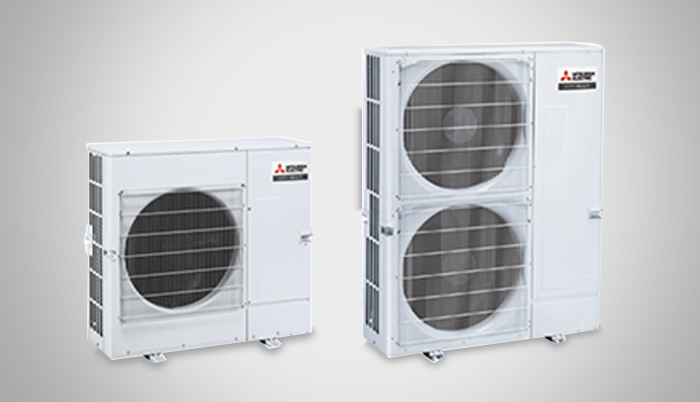
Conceptualized and engineered for commercial use, HVAC is a system that cleanses the air and delivers cool or warm air based on your needs. These systems are immensely valued for their principles of energy saving. To make a sound buying decision, it is imperative to understand the principles that go behind various technologies, especially when it comes to installing an efficient, superior-quality HVAC system for your establishment.
Variable Refrigerant Flow (VRF), a type of HVAC technology, is one of the most important air conditioning developments in the past years. A VRF HVAC system is not only able to provide cooling but heating as well. In fact, some models are even capable of providing both heating and cooling simultaneously to separate areas within your space.
Traditional air conditioning systems are well-suited for small areas as they often pump out air of the same temperature to a certain space. But, what about an office, restaurant, or hotel where different zones need varying temperatures, even if they are in proximity to each other?
This is where VRF can help. It uses different units, each with their respective temperature controls, to offer simultaneous cooling and heating across a building. Given their various benefits, VRF HVAC systems are increasingly gaining ground in commercial spaces.

In VRF systems, there is one outdoor condensing unit and multiple indoor units. The term variable refrigerant flow denotes the system’s ability to control the amount of refrigerant that flows to the multiple indoor units. This design approach allows for the use of several indoor units with different capacities as well as configurations, connected to a sole condensing unit. Such an arrangement offers individualised comfort control as well as heating and cooling in different zones at the same time.
A VRF system provides operational efficiency which works in the favour of both you and your employees. Following are some of the key advantages of VRF systems: -
VRF HVAC systems don’t need much space as the air handlers and other smaller systems do not require ducts in order to function.
Another benefit of a VRF system is that it promotes energy efficiency. The system is designed to provide the precise amount of refrigerant that is essential to cool a room, given the room’s present condition. This leads to the system being required to run less frequently and at lower capacities. The system is also able to capture heat during the cooling process which can then be channelled to other areas in the building that require heating.
Generally, the louder condensing unit of the VRF HVAC system is installed outside. As a result, you get to enjoy a relaxed and quiet environment inside the workplace.
VRF systems are popular for their flexibility and compact size. There is no requirement to tie up space for a huge maintenance room or service shafts. Water pumps, distribution fans, and hefty pipes for the circulation of fluid are not required for the system’s operation. This means that they are easier to install and use less space.
Different rooms of a building may have different heating and cooling requirements. For instance, the computer room will require a cooler temperature as compared to other areas of the office. A VRF system can provide heated and cooled air simultaneously to different areas. This way, it promises the important benefit of zoned heating and cooling.
A VRF HVAC system undergoes less wear and tear as it is designed to run only when needed and at partial-load conditions. Thus, there will be lesser chances of breakdown of the complete system or of the components of the system.
By now, we have established that VRF HVAC systems are known to promote energy efficiency. These systems consume lesser energy. They are designed to offer the exact amount of cooling that is required for the existing conditions of the space. This is why these units are considered to be environment friendly.
Given the plethora of benefits offered by HVAC systems, they are considered to be much better than conventional water-cooling solutions. And if we talk about HVAC VRF systems, in particular, they are better than traditional air conditioning systems, especially when air-conditioning is required for a relatively larger area.
Designed for your comfort, the Variable Refrigerant Flow (VRF) Systems — City Multi by Mitsubishi Electric is among the best VRF AC systems out there. Mitsubishi Electric is a world leader in air conditioning systems for industrial, commercial, and residential use. Popular for providing superior quality, reliable products, the brand offers VRF AC systems that are powerful, compact units that maximize room comfort, consume minimal energy and deliver high performance.